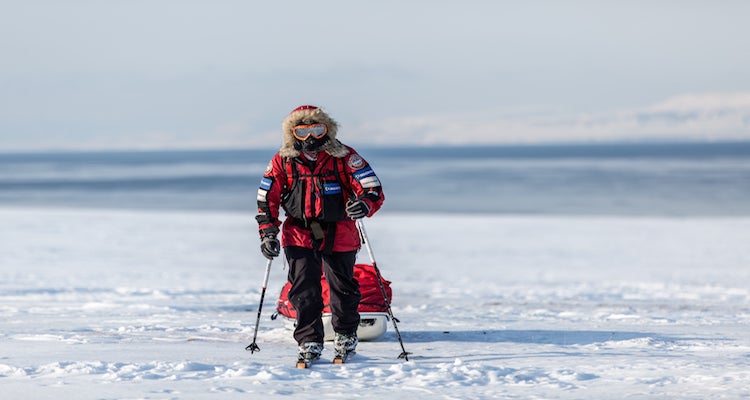Winter Camping Skills

'image courtesy Eric Larsen Explore'
THE EXPERT
Eric Larsen knows cold. He’s skied to both the North and South Poles, climbed Mt. Everest, and completed many other Arctic expeditions. Learn about his polar training courses at ericlarsenexplore.com.
1. Using a stove in your tent is usually not a good idea because of fire and carbon monoxide poisoning, but in the most extreme cold conditions—we’re talking under 20 degrees with 50 mph Arctic winds—it can help to cook in your tent to warm your shelter while saving time and energy. In the Arctic, I actually run two stoves—one for cooking and one for heating the tent and drying gear. So if you’re truly prepared for a trip to the Arctic, always light the stove in the vestibule; open the door(s) and vestibule at least a foot; use a stove platform; and air out your tent immediately if you begin to feel a headache/nausea.
2. Improve zipper pulls. Most of the ones on jackets, pit zips, and leg vents aren’t necessarily designed to be used with big gloves or bulky mittens. I add pieces of lanyard roughly 3 inches long.
3. Dead phone or camera? Place it in an inside pocket, next to your body, and it will likely come back to life.
4. Don’t sweat. It doesn’t matter how great your wicking baselayer is, sweat too much and stop for just a few minutes and you’ll be very cold. I constantly make adjustments to fine-tune body temp. Even at -30°F below, I’ll unzip my jacket if I get too warm.
5. Make eating and drinking routine. In cold weather it can be difficult to stop and fuel up. I keep a strict schedule: move for an hour and then take a five- to seven-minute break to eat and drink. Halfway through the day, I have hot soup.
6. Foggy goggles? It could be because you’re too hot and your face is sweating; cool down (see #4). Alternatively, warm air from your mouth or nose could be sneaking up under your goggles. The most common culprit? Wearing goggles over a neck gaiter.
7. Keep boot liners dry. I take my liners out and put them in my sleeping bag at night. Bonus points for taking out insoles as well.
8. Use vapor barriers on your feet. These nonbreathable “socks” help keep you warm and prevent moisture from getting into boot liners. Don’t want to splurge for the silicone-impregnated kind? Plastic shopping bags work, as well.
9. Burn a candle. I’m a huge fan of LED headlamps, but I still bring a candle lantern for a little extra heat in the tent. Often I’ll carefully hang the lantern up in the evening and let it burn through the night.
10. Add 40 grams of butter to every meal on long trips. You burn more calories in winter and need more fat to stay warm.